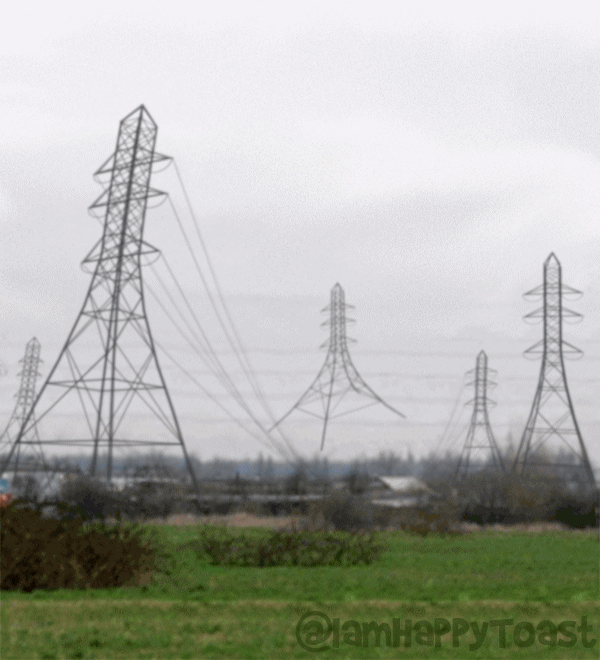Why Some People “Hear” Silent GIFs
This week, researchers published their findings on the largest study to date on the phenomenon, which is called visually evoked auditory response or vEAR
/https://tf-cmsv2-smithsonianmag-media.s3.amazonaws.com/filer/4a/c1/4ac1f730-ff1b-47c1-9ec1-227336cb3d72/ruido_noise_041113gfdl.jpg)
Short looping images called animated GIFs seem to be everywhere on the internet, flickering as ads or serving as social media reactions. Though all GIFs are silent, that doesn't stop some people from hearing them. As Niall Firth reports for New Scientist, the largest study to date of the phenomenon—called visually evoked auditory response or vEAR—shows that more than 20 percent of the 4000 people surveyed find GIFs quite noisy.
The illusion strikes some people when they see certain moving images, Firth explains. In the non-digital world, there is enough noise accompanying visual stimuli that it can be difficult to figure out when a sound that shouldn't be there is heard. But when GIFs make noise in the slightly more controlled realm of computer-mediated interactions, people started noticing.
That happened early in December 2017, when Lisa DeBruine, a psychologist at the University of Glasgow posted a GIF on Twitter of two electrical pylons playing jump rope with a third. As the central pylon leaps over the swinging power lines of the two outer pylons, the landscape judders — just as one would expect if a large, metal tower was capable of jumping and landing nearby.

The GIF (first created by animation and video creator Happy Toast) makes no noise. But DeBruine asked via Twitter: "Does anyone in visual perception know why you can hear this gif?" She also ran a Twitter poll where 67 percent of the more than 315,000 respondents said they experience a thudding sound when watching the GIF. In replies, other uses claimed to hear boinging sounds. Still others report that while they don't hear anything, they do feel a shaking.
Amidst the replies, Chris Fassnidge chimed in with: "That is basically the subject of my PhD."
Fassnidge and his colleague Elliot Freeman, both cognitive neuroscience researchers at the City University of London, have been researching vEAR because it is a form of synaesthesia, where simulation of one sense leads to responses in another sensory pathway. Colors evoke flavors, visuals trigger sounds.
Freeman tells New Scientist that he first noticed that he could hear visuals as a student, when a distant lighthouse's flashes seemed to buzz. None of his friends could hear the light, but the phenomenon was a bit of a quirky one to explain. On his website, he writes:
I ‘hear’ car indicator lights, flashing shop displays, animated adverts on web-browsers, lip-movements, and the footsteps of people as they walk. It is a clear auditory sensation, mostly in my mind’s ear, though sometimes I can confuse it with real sounds if the latter are very quiet. The sounds are like white noise (‘sshhh’), but often they have different harmonics, especially when there are sequences of flashes.
With the jumping pylon, vEAR went viral. "It raised everyone's awareness above a threshold where it was taken more seriously," Freeman tells New Scientist.
For their research, the two scientists asked people to take an online survey that includes 24 silent videos that respondents rate on a vEAR noise scale. Of the 4,000 people who took that survey (and you can as well), 22 percent rated more than half of the videos as ones that give them a clear sensation of sound. They reported the results this week in the journal Cortex.
The videos that people reported cave them the most sounds were of events that create predictable sounds, such as a hammer hitting a nail or metal balls colliding. But for some people, random patterns and abstract lights were enough to create the auditory illusion.
The phenomena may arise from different brain connectivity patterns, Freeman tells New Scientist. The auditory regions of one person's brain may be unusually well-connected to the visual regions.
That explanation seems to matches the experience of Lidell Simpson, who is technically deaf, but as he explained over email to Heather Murphy for The New York Times: "Everything I see, taste, touch and smell gets translated into sound." He added: "I can never shut it off."
Fassnidge tells Murphy of The Times that it's possible the parts of Simpson's brain that would typically process auditory information learned to process visual information instead. Simpson was fitted for a hearing aid as a toddler.
Freeman and Fassnidge's ongoing research involves electrically stimulating people's brains to see if they can provoke vEAR responses. “Using electrical brain stimulation, we have also found tentative signs that visual and auditory brain areas cooperate more in people with vEAR, while they tend to compete with each other, in non-vEAR people," Freeman said in an email to Murphy. The new experiments should help the scientists ask more pointed questions about the auditory illusions and the brain wiring that makes it possible.
For now, however, the biological basis of this synesthesia remains unknown. The study least lets people know they are not alone in hearing what is actually silent. For more comradery, those that "vEAR" can browse the Reddit forum dedicated to Noisy GIFs. Even the loudest images there won't damage your eardrum.